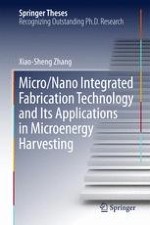2016 | Buch
Über dieses Buch
This book presents a universal mass-production micro/nano integrated fabrication technology, which can be used to realize micro/nano hierarchical structures on Si-based materials and flexible polymeric materials. This fabrication technology has been systematically investigated by using experimental measurements, mechanism analyses, theoretical simulations and so on. Three common materials (i.e., silicon, PDMS and Parylene-C) with micro/nano hierarchical structures have been successfully fabricated, which also show several attractive properties. Furthermore, this book introduces this fabrication technology into microenergy field, and proposes several high-performance nanogenerators, of which practical applications have also been studied in commercial electronic device and biomedical microsystem.
Anzeige
